Advantame: the Newest Sweetener on the Market
By Lisa Kaschmitter, Arizona State University Nutrition Student
Have you heard about the newest sweetener to arrive in our U.S. market? About a year ago, the Food and Drug Administration (FDA) approved the introduction of advantame. Advantame is a new artificial ingredient boasting 20,000 times the sweetness of regular table sugar (gram per gram). 1 High-intensity sweeteners, (as they have been dubbed by the industry), are nothing new. Most Arizonans are familiar with seeing other FDA approved artificial sweeteners such as Equal, Splenda, and Sweet’N Low available on the table at restaurants, as well as a familiar staple in many homes.

Graph source: blog.fooducate.com
Consumers and companies may consider the approval of this sweetener a win-win because this sweetener is a low-calorie sweetener and because of its potency, less will be needed to create a product, therefore lowering company production costs.2 Another consumer benefit that the FDA notes is that these high-intensity sweeteners typically do not raise blood sugar levels which helps companies cater products to people who suffer from illnesses that are effected by sugar intake and insulin levels, such as diabetes.2
What is Advantame?
Advantame is water-soluable and free flowing which means it is available to be used as a tabletop sweetener, while also having applications in baking, beverages, frozen desserts, and many more areas where sweetener is used.2 The advantame website states that:
“The U.S. Food and Drug Administration has approved Advantame, an innovative new sweetener, for general use in foods and beverages. Due to its excellent taste and functionality along with very low cost in use, advantame can be used to partially replace sugar, high fructose corn syrup or other high potency sweeteners. Since advantame blends well with caloric and non-caloric sweeteners, it provides food and beverage companies with an opportunity to reduce calories and manage their sweetness costs. Advantame extends sweetness duration in chewing gum and improves the sweetness profile of many confections. Maintaining the same sweet taste profile with less caloric sweetener can now be achieved with Advantame”3
The FDA cites the data from 37 animal and human studies to show advantame is a safe alternative to traditional sugar.1 These studies researched effects on the reproductive system, immune system, developmental system, and nervous systems.1 Although these tests showed no negative effects, many people still have concerns over the long-term effects. There were 4 human trials analyzed by the FDA, the longest of which, running for a 12-week time frame.4 These studies also were noted for their small sample size.4 Scientists agree that a larger sample size lead to more sound application of results.
Advantame contains phenylalanine, which is also a component of aspertame. Aspertame has been linked to many negative health effects if an individual consumes it over many years. Phenylalanine also can be difficult to metabolize for people with Phenylketonuria, (a rare genetic disorder). 5 The FDA attempts to clear concerns about both issues by reminding consumers that advantame is so sweet that it can be used in smaller amounts to produce the same sweet effect that aspertame needs larger quantities for and that artificial sweetener is just one of many sources of phenylalanine in the diet.4
One concern of those who suffer from Phenylketonuria is that advantame does not have to be labeled as an ingredient in products that use it.6 Their reasoning for this is that the levels of advantame that will be used to create an individual product are so small, that labeling is not necessary for public safety.6 This lack of labeling will make it hard for people who wish to track their intake, to know how much of an ingredient is being consumed during their daily lives.
Currently advantame is approved for use in the the United States, Mexico, the E.U., Austrailia, New Zealand, South Korea, and Taiwan.3
References
- Additional Information about High-Intensity Sweeteners Permitted for use in Food in the United States. U.S. Food and Drug Administration. FDA, 25 May 2016. Web. 23 November 2015.
- FDA Approves New High-Intensity Sweetener Advantame. U.S. Food and Drug Administration. FDA, 19 May 2014. Web. 23 November 2015.
- Advantame. Ajinomoto. Ajinomoto. n.d. Web. 24 November 2015.
- Food Additives Permitted for Direct Addition to Food for Human Consumption; Advantame. Federal Register. FDA. 21 May 2014. Web. 24 November 2015.
- FDA Approves New Artificial Sweetener. Melissa Healy. Los Angeles Times. 21 May 2014. Web. 24 November 2015.
- Coming your way- aspartame on steroids. Jenny Thompson. Dr. Leonard Coldwell. Web. 24 November 2015.
Let’s Cook with Lemons
By Lauren Scott, Arizona Farm Bureau Intern
Lemons are one of the many tasty fruits in season in spring. A favorite of Arizonans, the lemon can be used in many different dishes to create culinary works of art. It’s not sweet like your typical fruit, or citrus for that matter, but people seem to really enjoy the taste of lemon in foods.
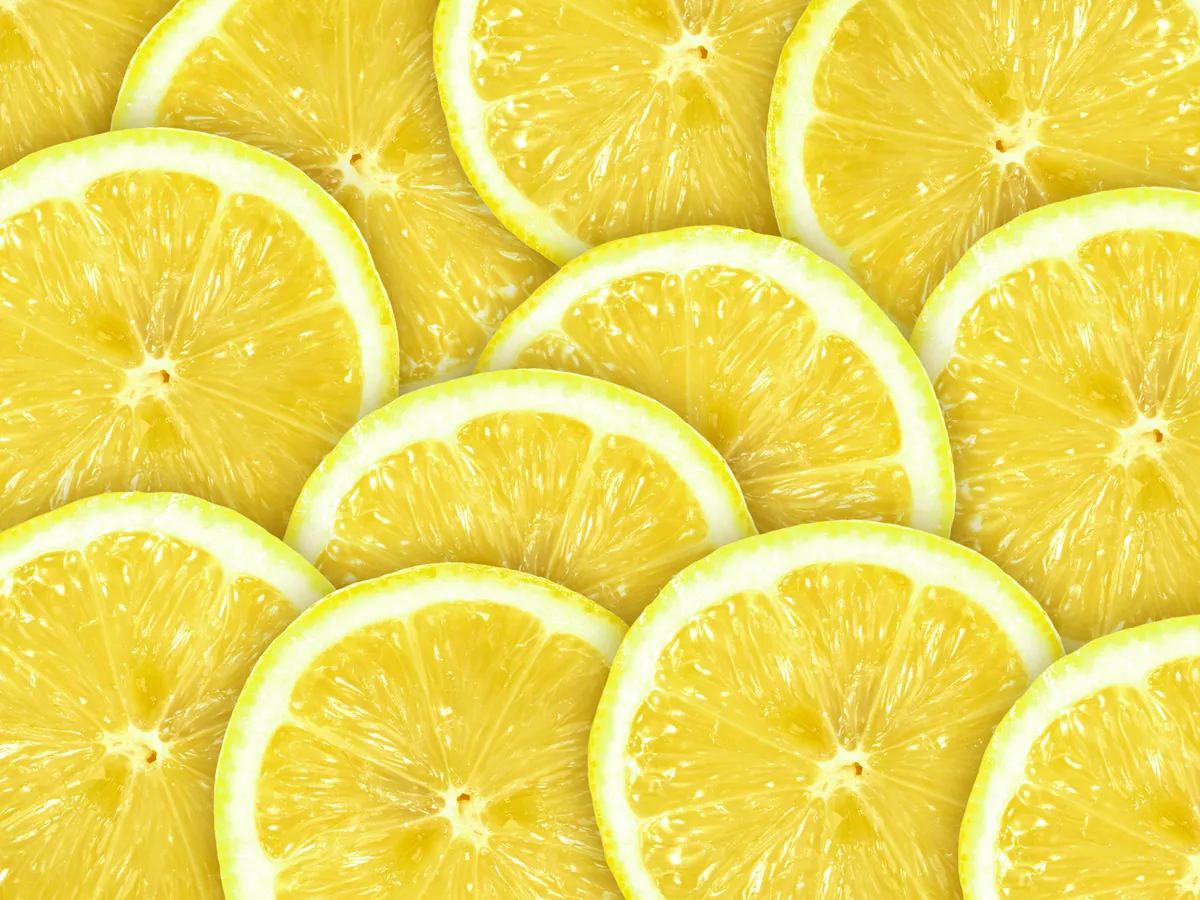
Here in Arizona, we grow some of the best lemons around. Though you might see old citrus orchards in Mesa turned into development, Yuma county is still host to a variety of citrus groves, among other areas in the state.
Plus, as we know, lemons are high in vitamin C. A squirt of fresh lemon in a glass of water brightens the beverage immediate and ensures an infusion of health.
Lemon is one of my favorite flavors, and I can’t resist a good lemon meringue pie! As we move into spring and summer, citrus flavors become more popular, and citrus fruits become more available. So go stock up on lemons, because you’re going to need them to make the following recipes!
Main Dishes:
- Shrimp Ceviche
- Baked Lemon Chicken
- Lemon Rosemary Lamb Chops
- Lemon Baked Cod
- Citrus Marinated Grilled Turkey
- Lentil Soup with Lemon
- Chicken with Shallot Cream Sauce
- Chicken Picatta
Side Dishes:
- Stuffed Nasturtium Leaves
- Lemon Broccolini
- Melon-Cucumber Salad
- Lemon Rice
- Lemon Asparagus
- Lemon Risotto
- Green Beans with Lemon and Garlic
- Lemon Spinach
Desserts:
- Arizona Sunshine Lemon Pie
- Lemon Tiramisu
- Prickly Pear Cheesecake
- Lemon Cake
- Lemon Sorbet
- Lemon Bars
- Lemon Cookies
- Lemon Cooler Cream Cake
Drinks:
- Fresh Lemonade
- Rosemary Lemonade
- Lemon and Cucumber Water
- Lemon Drop Cocktail
- Lemon Shake-Ups
- Strawberry, Lemon, and Basil Mimosas
- Orange, Lemon, Grapefruit, Honey Punch
- Touchdown Lemon Shandy
Refresh yourself this spring and summer with the zesty and abundant lemon. Head to your local grocery store to pick some up, and spend the coming warm months learning to cook and bake with them! The first thing I’m going to try off this list is the Arizona Sunshine Lemon Pie! Try it with me, and let me know what you think in the comments! Also, remember to visit Fill Your Plate for more fun and tasty citrus recipes!
30 Ways to Use Nuts
By Angela C. Torrence, RDH and nutritionist
Some people have a negative opinion of nuts due to their higher fat content but the truth of it is, nuts provide a great source of fiber, vitamins and minerals, plant proteins, and unsaturated fatty acids. In fact, there is evidence to suggest that nuts help curb your appetite which may compensate for the higher fat content especially when they are eating them as a snack. One recent study put out by The American Journal of Clinical Nutrition examined 27 different studies related to nut consumption in its relation to ischemic heart disease (IHD) and diabetes. The study reported that consumers who had four weekly servings (28.4g/1 oz) of nuts had a significantly lower risk for fatal and nonfatal IHD and had a significantly reduced risk for diabetes.
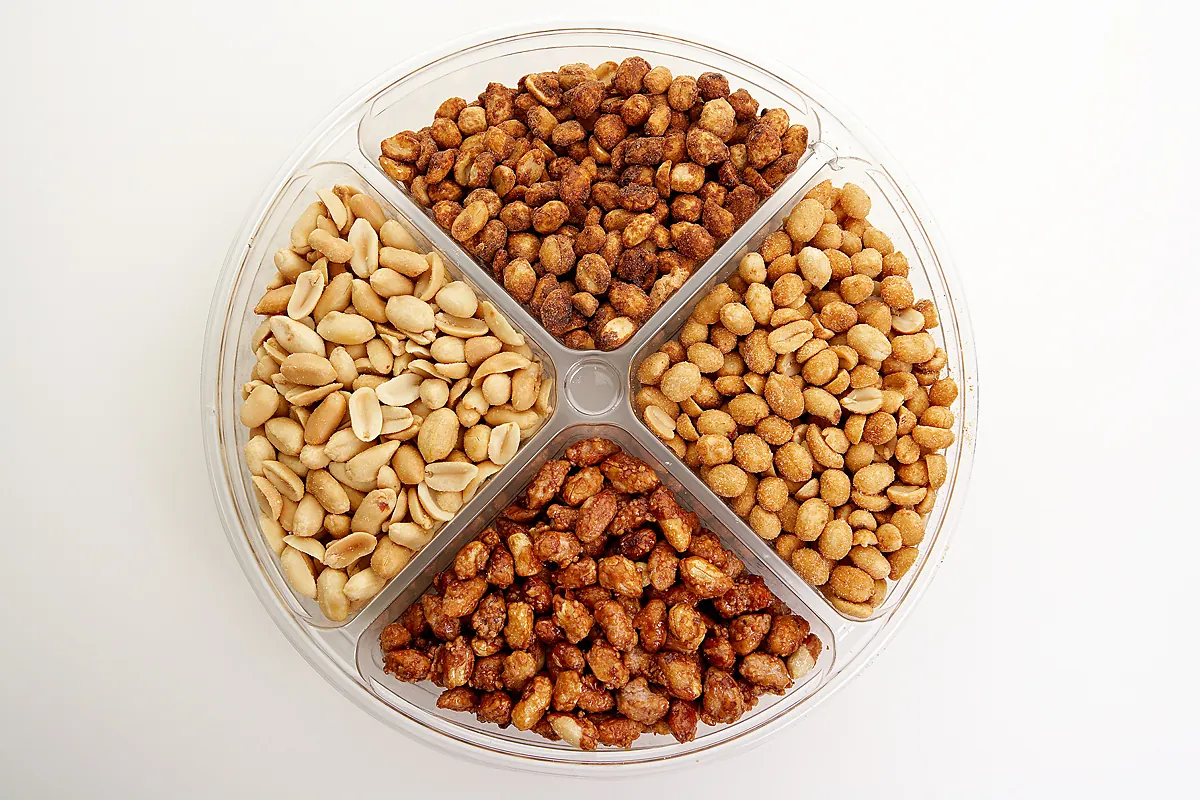
One interesting note about nut consumption is that preparation of nuts impacts the way the nuts are processed in the body. A second study put out by The American Journal of Clinical Nutrition reported that if your main concern with eating nuts is to hold you over and stave off hunger, then eating nuts whole is the best way. On the other hand, if you are trying to maximize nutrient intake, then chopped, sliced, or ground nuts are best. The study mentioned that the breakdown of peanuts in the stomach differs based upon the cooking technique. For example, disintegration rates going from fastest to slowest are as follows: fried, roasted, boiled, and raw.
While it may not make up a major part of your nutrition, nuts should definitely be included in your well-balanced diet. Here are 30 ways to include nuts into your life. Enjoy!
Basics and Nut Staples
- Nut Milks
- Nut Butters **amazing!
- Fresh Basil Pesto
- Not-So Cheese Sauce *one of my favorite go-to recipes
- Savory or Sweet Cashew Cream
Snacks
- Guinness Beer Nuts
- Sweet, Salty, Spicy Party Nuts
- Spiced Glazed Nuts and Pretzel Mix
- Maple Rosemary Cocktail Nuts
- Chocolate Peanut Butter Swirl Bark
Breads
Soups and Meals
- Raw Zucchini Lasagne: vegan
- Mast’o Khiar – Persian Cucumber and Walnut Soup
- Cold Garlic Almond Soup with Coriander and Lime
On the Go
Desserts
- Raw Apple Pie *I love to make this
- 5 Minute Raw Chocolate Tart
- Poteca Nut Roll
- Cowboy (chocolate chip) Cookies
- Russian Tea Cakes
- Cinnamon Pecan Rolls
- Peaches with Vanilla Ginger Cashew Cream and Pistachios
- Chunky Cinnamon Nut Ice Cream
Crafts
- Holiday Nut Wreath
- Mice Pinecone Friends (ornaments)
- Leaf and Nut Mobiles *great activity for kids to help with
So, it’s easy to incorporate nuts into your diet. For healthy recipes, go to Arizona Farm Bureau’s Fill Your Plate.
Picky Eaters
By Michael Russell, Arizona State University Nutrition Communications Student
Wanting our children to eat healthier is a strong desire for many parents and learning how is a subject of much research. I myself am about to introduce my first child into the world in May and I am very excited to do so. I recently wrote an article about making your own baby food and the benefits of it, so I wanted to do some research into getting children to continue at eating healthier. After conducting some research there was one aspect of a child’s ability to eat healthy that kept jumping out at me, that was that they may be picky eaters. I started to think back to how I was as a child and at times how difficult it was for my mom to get me to eat my fruits and vegetables so I decided to do some research on the topic and this is what I learned.

As your child continues to develop, from baby to child, they may go through a stage where they question the unknown and try to exert control over their environment. At this point in their development, they may become what we know as a picky eater. Again, this is completely normal so as parents we need to game plan and learn to deal with it. A very important ability for any parent is to understand the meaning behind what your child is saying when it comes to eating healthy foods.
- “It tastes yucky!” We as human are conditioned to assimilate sweetness with survival, an example of this is breast milk. While on the opposite side of the spectrum bitter tasting foods may mean something that is toxic. What we may forget as adults is that children have several other taste buds than us and food will register as more intense to them. So consider a lemon, to a child it is extremely tart and will cause them to believe there may be something wrong with eating it. Some children may even be hypersensitive to certain flavor profiles which may also play a part in what and how they eat.
- “I am not hungry”: There are several factors that go into your child not really being hungry at the time you want them to eat. Two of those factors are you may be serving way too much food at dinnertime and secondly your dinnertime may be too rigid. First, let us keep in mind that children typically consume far less than adults, so if they’ve eaten a snack between lunch and dinner they may truly not be hungry. As for your dinnertime being too rigid, keep in mind that your child really doesn’t want to be sitting around the dinner table for more than ten to fifteen minutes so you have to prepare for an unruly child if you are expecting them to stick around for much longer.
- “This is boring”: Sorry to break it to you but maybe what your serving is really boring, and I don’t mean flavor profile boring, but visually boring. Our children at this time are developing their imaginations and likes and dislikes. If they are given something that lacks any visual stimulants, they are more likely to disregard it as boring.
Now that we have a better understanding as to what our children mean we can now set up a strategy on how to introduce healthier foods to their diets.
- Don’t use bribery: Like I mentioned above your child may not be hungry because their stomachs may truly be full so try not to use bribery as a means to get them to eat. Don’t tell them if they clean their plate they may be allowed to watch their favorite show. This may lead them to associate mealtime with anxiety and may cause them to become less sensitive to their bodies fullness and hunger cues.
- Stick to your schedule: Serve meals consistently at the same time to get your child into a routine of when to expect to eat. It is said that a child must try something ten to fifteen times before they decide if they like it or not.
- Make it fun: As I mentioned above, children like visual stimulation, so make meal time interactive and fun. When serving new, healthier foods set it up so that the plate is entertaining to the child. Make a face out of fruits and vegetables, serve vegetables with a sauce for dipping, serve them breakfast for dinner (one my favorites even as an adult) and introduce a lot of brightly colored foods.
- Food shopping buddy: When you go food shopping and your child is with you have them pick out some fruits and vegetables. If they feel like they are contributing to the meal, they will mostly like become invested and want to eat what they picked out.
- Lead by example: You can’t expect your child to eat something that you, yourself, will not. If you want them to buy into healthy eating, you too have to buy into as well.
- Get Creative: When introducing new fruits and vegetables be creative and think of ways to integrate them into other meals. Some great ways to do this is to chop fresh vegetables and serve them on top of pasta and use fresh fruits slices on top of cereal.
- Avoid Distractions: It is sometimes difficult enough getting and keeping your child’s attention but when you are asking them to do something they do not enjoy it will be even harder so avoid distracting them any further. Do yourself a favor and turn off the television and any other electronic devices. This is an important time as far as developing a relationship with your child so limiting their distraction as well as your own is paramount.
- Dessert should not be a reward: When you withhold dessert it leads the child to believe that dessert is the best meal and can cause the child to desire sweet foods. Limit dessert nights to once or twice a week or reconstruct desserts to include fresh fruits.
- Cook only one meal: If your child rejects the first meal do not cook them a separate meal. Get them to understand that they are only going to eat what you make them.
- Serve in a compartmentalized plate: Some children’s pickiness may result from foods touching, investing in a compartment plate will separate the foods and allow the child eat without anxiety.
- Limit drinks and snacks: Do not allow your child to fill up on beverages and avoid stuffing them with too many snacks in between meals.
REFERENCES
1. Cicero K. Proven Strategies for Picky Eaters. 2016. Available at:
http//www.parents.com/recipes/nutrition/picky-eater-strategies/. Accessed February 23, 2016.
- org. Nutrition for Children and Teens: Easy Ways to Help Your Kids Eat Healthier.
- Available at: http://www.helpguide.org/articles/healthy-eating/nutrition-for-children-and-teens.htm. Accessed February 23, 2016.
- org. Children’s nutrition: 10 tips for picky eaters – Mayo Clinic. 2016. Available at:
http://www.mayoclinic.org/healthy-lifestyle/childrens-health/in-depth/childrens-health/art-20044948?pg=1. Accessed February 23, 2016.
- Micco, N. How to Handle Picky Eaters. 2016. Available at:
http://www.parenting.com/article/picky-eater-kids. Accessed February 23, 2016.
- Speech-language-pathology-audiology.advanceweb.com. Picky Eater or Feeding Disorder?.
- Available at: http://speech-language-pathology-audiology.advanceweb.com/Features/Articles/Picky-Eater-or-Feeding-Disorder.aspx. Accessed February 23, 2016.
Hello! My name is Michael Russell and I am a nutrition communication student at Arizona State University. I am originally from northern New Jersey where my love of food was nourished by my mother’s cooking and the different types of foods that were ready and available near and around me. As I grew I toyed with the notion of becoming a chef but as I watched one of my best friends deal with the demand of working in a New York kitchen I knew it wasn’t for me, though I still wanted to be involved with food.
So while I was still living in New Jersey I decided to enroll in a few nutrition classes at Montclair State University. Soon after I met my wife and fell in love. In September of 2012 we got married and by February of 2013 we moved out to Arizona.
In January of 2014 I decided to enroll at ASU a dietetic major. A quick visit with my guidance counselor helped me plan out my future in the nutrition field because she introduced me to the nutrition communications major. I thought this was a great opportunity for me to combine my knowledge of food and my love for story telling. I chose to take the writing path of the nutrition communications major and was given an opportunity to write for the Arizona Farm Bureau.
This a great time in my life because not only am I developing my future career skills but my wife and I are expecting our first child on May 20th. His name is Harrison and we cannot be more excited to meet him!

The Magical Cocoa Bean
Get to know cocoa beans better.
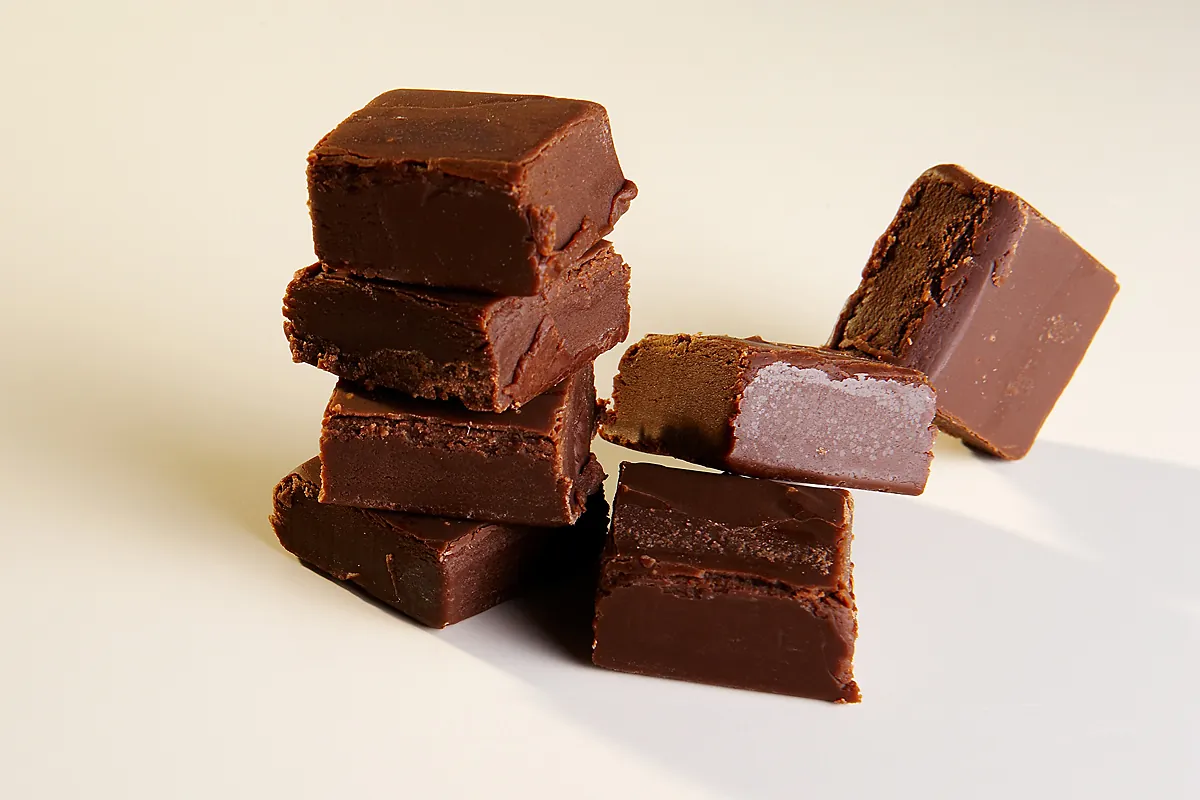
By Veronica De Lira, Nutritionists
According to herbwisdom.com, cocoa beans comes from the Amazon where they grow best, as the beans need a warm climate with plenty of shade making Africa, Asia, Central and South America prime locations for growth.1 According to historyofchocolate.com, there are “1.5 million cocoa farms in West Africa” which explains its popularity. 2
The popularity is nothing new as cocoa beans are the key ingredient to making one of our favorite treats, chocolate. According to uncleharrys.com, cocoa beans were even used as currency between the Mayans and Aztecs. At one time, rumor has it that Montezuma actually had raw cocoa beans hidden away rather than jewels or gold.
And, we must appreciate our farmers who grow cocoa beans. 3 The growing process actually takes a while to perfect, as farmers want the best quality of seed.
Health Benefits of Cocoa Beans
Besides being an ingredient in delicious dishes, Cocoa beans also boast a number of health benefits. According to herbwsidom.com, here are a few: 1
- Antioxidant
- Antidepressant
- Promotes Cardiovascular Health
- Energy booster
- May help aid in weight loss
- Good source of vitamins and minerals
How can I cook with cocoa beans?
According to bestsuperfoods.wordpress.com, when cooking with whole beans all you have to do is crush them and remove the peel which can be done with your hands, they are also pretty versatile as you can use them whole or ground. 4 Cocoa bean may also be called cacao beans.
And, you may discover you like roasted better than unroasted. Cocoa beans actually come in a variety of forms such as
- Roasted
- Unroasted
- Cacao bean nibs (roasted form)
- Powder
What can I use Cocoa beans for?
Cocoa beans can be used to add sweetness to a lot of favorite recipes and be used to create some great dishes such as:
- Tea
- Smoothies
- Desserts
- Raw food
- Cake
- You can make your own chocolate
- Hot chocolate
Here’s a Recipe to Try
Here is a recipe from food.com Cocoa bean brownies that is perfect for that sweet tooth of ours. 5
Ingredients
- 3 eggs
1⁄3 cup canola oil or 1⁄3 cup olive oil
- 15 ounces garbanzo beans, drained and rinsed
- 3 tablespoons soymilk or 3 tablespoons milk
1⁄2 cup cocoa, unsweetened
- 1 cup sugar
1⁄2 teaspoon baking powder
1 -2 teaspoon peppermint or 1 -2 teaspoon orange extract
Directions
- Preheat oven to 350 degrees.
- Put eggs and oil in the blender and mix for 10 seconds.
- Add remaining ingredients into the blender and process until smooth.
- Spray 8 x 8 inch pan with cooking spray. Pour batter into pan and bake for about 35 minutes*, or until brownies are just pulling away from edges of the pan.
- Cool, cut and serve.
- Keep an eye on them after 30 minutes as oven temps can vary.
- I refrigerate the brownies and find them even better when they have cooled. Very chocolaty, very yummy.
- Because they are made with beans, it is advised not to eat too much at once.
Don’t forget to check our Fill Your Plate’s recipe section. In the dessert section of Fill Your Plate, you’ll find a variety of chocolate recipes.
References:
1.”Cocoa Beans Benefits & Information.” Herbwisdom. Web. 6 Oct. 2015. http://www.herbwisdom.com/herb-cocoa.html
- “Beans.” – The Story of Chocolate. Web. 6 Oct. 2015. http://www.thestoryofchocolate.com/Where/content.cfm?ItemNumber=3427
- Harry, Uncle. “Uncle Harry’s Product Library.” Cacao Beans: A Real Superfood. Web. 6 Oct. 2015. https://www.uncleharrys.com/blog/product-library/post/cacao-beans-a-real-superfood
- “What Can I Do with RAW Cacao Beans or Nibs?” BEST SUPERFOODS. 5 Nov. 2008. Web. 6 Oct. 2015. https://bestsuperfoods.wordpress.com/2008/11/05/what-can-i-do-with-raw-cacao-beans-or-nibs/
- “Cocoa Bean Brownies Recipe – Food.com.” Cocoa Bean Brownies Recipe – Food.com. Web. 6 Oct. 2015. http://www.food.com/recipe/cocoa-bean-brownies-330460
12 Holiday Dishes you Should Add to your Table
By Lauren Scott, Arizona Farm Bureau Intern
Every family has a dish or two that they make every holiday season. Maybe it is a recipe passed down from generation to generation, or maybe it was a new recipe mom wanted to try out a few years ago that stuck.
You see these dishes everywhere; on the table at Christmas, brought to holiday parties, or cooked up on a weekend because it was the only thing everyone could agree on. Dishes like these bring people together and are what the holiday season is all about.
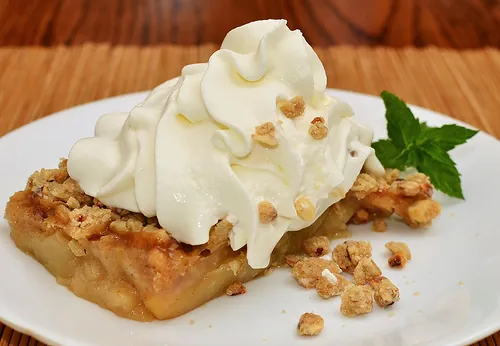
Now, I don’t want to kick that famous family dish off your table, but I may have a few more recipes that you can make in addition to the ones you already have. This little list contains everything from main dishes to desserts, so just pick out a recipe for the type of dish you need and you’re good to go!
- Apple Crisp (Pictured above)
Whether you are going to a party or hosting Christmas dinner, these Fill Your Plate recipes are sure to please both party goers and family alike; and if these recipes aren’t your cup of eggnog, fillyourplate.org has many more delicious recipes to choose from!
Thanksgiving Recipes to Thrill Your Guests
By Lauren Scott, Arizona Farm Bureau Intern
It’s no big secret that being the family’s Thanksgiving host for the year can get a little hectic. Between the family being in town and having the weight of an entire meal on your shoulders, your life will definitely be a bit busier than normal. There are often times when people’s Thanksgiving Day is ruined by the craziness that is preparing Thanksgiving dinner.

For a holiday that has its roots so deeply embedded in a foundation of being thankful, spending time with family, and giving back, I have never heard people complain more. I do understand where they are coming from, though. The preparation can be grueling but there are ways, of course, to cut down on the stress of being this year’s host or hostess while still providing your friends and family with an amazing atmosphere and meal. To do this we are going to need to take Thanksgiving back to the traditions of our grandparents with these tasty recipes guaranteed to thrill even the pickiest of dinner guests!
First up, we have some fabulous turkey recipes, as well as a twist if you are up for breaking tradition this year and trying a delicious prime rib recipe! You can’t go wrong with these three different ways to cook up your Thanksgiving dinner’s most important component, the main dish.
Citrus Marinated Grilled Turkey
Here are two ways to create the dish that holds Thanksgiving dinner together. With its tangy taste and ability to be paired with any side dishes, cranberry sauce is a must have for your dinner.
We all know that everyone’s favorite Thanksgiving side dish is homemade stuffing. You can’t beat the comfort-food-feel of this special dish that only comes around once a year. This recipe will give you that same home style taste of grandma’s famous stuffing, with a twist that will leave people thinking you’ve just graduated from culinary school.
Dru’s Special Holiday Stuffing
Another staple of many people’s Thanksgiving tables is yams or sweet potatoes; and although it seem like there aren’t many ways to prepare these yummy vegetables, here is one that will surely delight!
One last side dish to try this season is stuffed pumpkin. Not something typically served at Thanksgiving dinner, stuffed pumpkin will add an autumn feel to your table and add tastiness to your spread!
Thanksgiving dinner isn’t complete without the desserts, and pie has always been a go-to for all dinner hosts. Nothing is better than the smell of a freshly baked pie. Actually, I take that back. Eating that freshly baked pie is the only thing that can top the sweet smell they create. Here for you are two family favorite, tried and true recipes for the best kinds of pie to concoct for your meal!
Thanksgiving is a time of joy that should be spent with family and friends celebrating all that we are thankful for. It should NOT be a time of stress. So this Thanksgiving sit back, relax, and let these wonderful recipes do all the work for you!
And remember, Fill Your Plate has an endless number of recipes, including holiday ones! For Thanksgiving, we even have an entire category called “Recipes for Thanksgiving Dinner.”
Krazy about Key Limes
By Lauren Scott, Arizona Farm Bureau Intern
When you think of key limes do you think of summer? Me too. But it turns out that in Arizona, key limes are in season in October and November! These little limes need a warm tropical climate to grow in, and Arizona, although not very tropical, is warm! Now, we don’t grow key limes commercially here, but we do have them available directly from some of our retail or direct-market farmers. Commercially marketed key limes are typically grown in places like Mexico and India, and in the United States we have some small growing operations in California, Florida, and like I said, Arizona.

Key limes are a great addition to holiday dishes, and even though it’s a little strange to have such a tropical-feeling fruit available in the fall, I think we should embrace it and add it to our list of favorite autumn ingredients. Maybe we can even make key lime pie a tradition at the Thanksgiving table!
If you can’t think of any recipes including key limes to make, I’m here to help! Here are 15 tasty key lime recipes ranging from meals to desserts that I’ve pulled together. Start trying them today so they will be perfected by the time your holiday guests arrive!
Some of these articles were on recipes.com, which is no longer a website. See this story here to learn what happened.
- Original Key Lime Pie
- Key Lime Danish Pastries
- Honey Key Lime Grilled Chicken
- Key Lime Fudge
- Key West Shrimp Boil with Key Lime Mustard Sauce
- Key Lime Spritz Cookies
- Key Lime Cake
- Key Lime Phyllo Tarts
- Shrimp and Florida Spiny Lobster Tails with Hot Key Lime Butter
- Key Lime Cheesecake Bars
- Key Lime Frozen Yogurt
- Fresh Key Lime Salsa
- Key Lime Cupcakes
- Grilled Salmon with Key Lime Butter
- Key Lime Blue Cheese Chicken
While Fill Your Plate might not have any specific “Key Lime” recipes, you should check out our dessert category section within the “recipes” tab and see the variety of citrus recipes, including ones for the holidays on Fill Your Plate!
The Incredible, Edible Flower?
When people think flowers they think weddings, romance, and decoration. But, did you know some flowers can go far beyond that? There are some flowers that are edible and are a part of many cuisines across the globe.
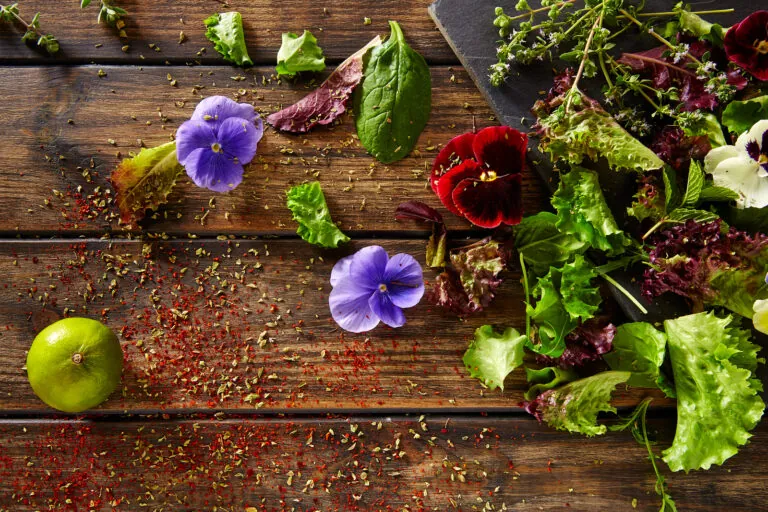
Flowers are often included in European, Middle Eastern and Asian dishes. Squash blossoms are commonly found in Mexican and Italian fare, and rose petals are found in several Indian dishes.
Flower petals are often found in salads and teas and are regularly used as garnishes for desserts. Adding flowers to food is a great way to add color and flavor. Some flowers are a little more on the spicy side (like chive blossoms) and others are more floral and fragrant. Some have a flavor reminiscent of your favorite herbs.
Cooking with flowers allows for much culinary creativity. We have put together a list of 10 edible flowers to help you get started on your floral food journey.
- Allium Plants in the allium family include onions, chives, leeks, garlic, and scallions. All blossoms from the allium family are edible and flavorful. In fact, the entire plant is edible.
- Basil The basil blossoms come in a range of colors, from white to pink to lavender. Their flavor is similar to the leaves, but are milder. When soaked in water, the seeds of several basil varieties become gelatinous, and are used in Asian drinks and desserts such as faluda, sherbet or hột é.
- Chamomile These flowers are small and resemble daisies. They have a sweet flavor and are most commonly used in teas. Chamomile teas are often used in treating hay fever, inflammation, muscle spasm, menstrual disorders, insomnia, ulcers, gastrointestinal disorders, and hemorrhoids. People who suffer from ragweed allergies may also be allergic to chamomile.
- Dandelion The entire dandelion plant is edible. The flower is slightly bitter and the leaves are a little more grassy-sweet. For a special treat, get out early in spring and look for the crown, which is the cluster of new buds that sits above the taproot. These are the sweetest parts of the plant.
- Dill The yellow flower of the dill plant tastes a lot like leaves of the herb, but make the dish more colorful.
- Lavender Sweet and spicy the flowers are a great addition to both savory and sweet dishes. It is often used in salads and dressings. Lavender flowers are occasionally blended with black, green, or herbal teas.
- Radish Radish flowers have a distinctive, peppery bite.
- Squash and pumpkin Blossoms from both are perfect for stuffing, each having a slight squash flavor. Remove stamens before using.
- Sunflower We all know you can eat the seeds, but you can also eat the petals and steam the bud like an artichoke.
- Violets Sweet in taste and make beautiful garnishes. These flowers are excellent additions to salads.
When you don’t know what a flower is for sure it can be dangerous to consume. Only eat the flowers you know for certain are edible. You should consult a reference book on edible flowers and plants to be sure. Your best bet is to eat flowers you have grown yourself. That way you are positive what you are eating and you can avoid contaminants from pesticides or pollutions. With all flowers be sure that you are only eating the petals and are removing the pistils and stamens before consumption. You should also introduce flowers to your diet gradually as they can exacerbate allergies.24
Additional Resource Provided by GreenandVibrant. com
My Child Has Food Allergies: Part 2
By Katherine Cook
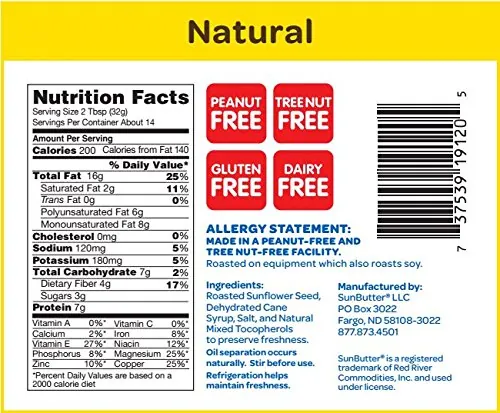
Having a child that has food allergies changes everything.
Not only does the child have to learn how to cope with lifestyle changes, but your entire household does. Little mistakes in the kitchen could mean a trip to the doctor or hospital, going out to eat becomes nearly impossible, and you get to know the school nurse well. You become that person reading every single ingredient label super closely in the supermarket, being rewarded with eye-rolls and mockery from your fellow shoppers. In short, the adjustment can be rough.
After my son, Stanley, was diagnosed with multiple food allergies the first thing I did was research. I wanted to know everything there is to know about food allergies, mainly how to protect him. I knew that we needed to make our home a safe place for him. I couldn’t control what the rest of the world was doing, but I could control his home.
Making the Home an Allergy Safe Zone
The foods that cause allergic reactions are called “allergens.” Even the smallest amount of an allergen coming in contact with an allergic person can cause a reaction. Reactions most commonly occur when the food is eaten, however with more serious allergies all it can take is a touch.
Some families choose to eliminate the offending foods from their homes all together. This is easiest when the child has only one or allergens that need to be eliminated. When you get into multiple food allergies, like Stanley has, keeping everything out of the home becomes more difficult. We have other children in the house who may gain some nutritional benefits from the foods he is allergic to as well. We decided complete elimination wasn’t an option for us, we would have to adjust by safe food handling and education for Stanley on what not to touch.
By choosing to allow allergens to remain in our house there was the risk that those foods could “contaminate” our safe foods and home, this is known as cross-contact. Cross-contact happens when a food allergen comes into contact with food or items not intended to contain that allergen. There were measures that we needed to take to make sure that did not happen.
- Learn how to read food labels properly and look for hidden allergens. FARE has some good guidelines on how to educate yourself on how to do this. The U.S. Food and Drug Administration’s Food Allergen and Labeling Consumer Protection Act and recent Gluten-Free Food Labeling Rule have made shopping much easier, but care and caution are still important.
- Label foods as either safe or unsafe. This will help your child to know what they can have as well as other visitors (grandparents, babysitters, etc.) when they are over. It is also more convenient for you when you are still learning what is safe or not. All you need to do is read what you wrote on it instead of having to re-read labels. We used a black permanent marker and wrote the words on them, and with Stanley being older (seven) at diagnosis this worked well because he could read it.
For younger children who may not be able to read kidswithfoodallergies.org recommends using red and green stickers. Red for unsafe foods and green for safe. (Red means “stop,” green means “go.”)
- Dedicate at least one shelf in the pantry, refrigerator and freezer to allergen free foods. To avoid cross-contact it is best not to place open foods next to each other. It can also be confusing for items that look similar to be on the same shelf. Even if they are labeled that can be overlooked when you are in a hurry.
For example we buy both peanut butter (for our allergy free child) and sun butter (it’s like peanut butter but made out of sunflower seeds in a peanut free factory.). The packaging looks very similar and having them next to each other could be a risk.
- Assign “safe” kitchen utensils and appliances. For example we have separate cutting boards. One for all the foods Stanley can eat and one for the foods he cannot. It is also good to assign a cabinet for the pots, pans, cutting boards, etc. that are only used for allergen free cooking. For wheat/gluten allergies it is recommended to use a separate toaster as well.
- Avoid food supply contamination. Make sure everyone is washing their hands before touching any safe foods. Do not allow utensils with allergens on them to touch your safe foods. For example, if you spread butter on wheat toast then dip your knife back into the butter the butter is now contaminated with wheat and is unsafe. Make sure everyone is cleaning all surfaces after preparing food. Food made on an unclean countertop could result in cross-contact.
- Avoid spreading allergens throughout the house. When someone eats or touches an allergen they should wash their hands with soap and water immediately after. Confine food consumption to the dining room and kitchen to help prevent spreading. If you don’t you run the risk of crumbs and allergen traces getting into your carpet, furniture, and other surfaces. Clean any utensils and surfaces that may have come in contact with the allergen right away.
It is important to note that hand sanitizer does NOT remove food proteins. Hands must be washed with soap and water.
- Take special precautions when cooking. If you are making a meal with both safe and unsafe foods you should prepare the safe food first. Make sure you cover the food well when cooking the unsafe food. Do not use the same utensils to prepare un-allergenic and allergenic foods. After use immediately place all plates, cutting boards, and utensils into the sink and/or dishwasher. Teach your food allergic child that things in the sink and dishwasher are not safe until they have been washed properly. When using a grill you need to fully clean it before cooking for an allergic child. Using foil or a clean grill pan to prepare their food is even better.
- Wash dishes immediately and carefully. All dishes need to be washed in hot, sudsy water before using them to prepare safe foods. Rinse off all dirty dishes before loading them into the dishwasher to prevent bits of dried allergens from sticking to clean dishes.
*Keep medications in a safe and easily accessible place, just in case.
Making Your Child Safe Outside of the Home
As a parent sending your child out into the world is a scary thought. When your child suffers from food allergies it becomes even scarier. It is very important to take the proper measures in your home to ensure their safety, but more than that, you need to teach them how and why. You won’t always be around to protect them so it is vital to educate them. Everything you know, they should know so they can make the right choices when you aren’t around.
- Going to birthday parties and friends’ homes. With careful planning you can make sure your child has safe food to eat. Whenever Stanley is invited to a friend’s home or to a birthday party I always call the parents and discuss his allergies with them. Often you will hear a slight hesitation or annoyance in their voice when you talk to them. They already have a lot going on planning a party or get together, they don’t want to worry about more. I don’t want him to ever feel excluded because of his allergies. I cannot stop him from feeling different, but I can keep him from being isolated. So I am quick to assure the parents that if they are unable to work around them that I will send Stanley with his own food. All they have to do is keep it separate from unsafe food. This is typically what ends up happening. I will also print out an allergy action plan for them just in case and send him with medications he may need.
- Going to school. By working as a team with the school personnel, other parents, and your physician, you can ensure that your child has a safe and rewarding experience. Food Allergy Research and Education (FARE) has created a guidance document to help you help your child attend school safely every day. I found it very useful in talking to Stanley’s school about his safety. You will probably attend countless meetings with teachers, principals, and nurses at the beginning of every new school year. And eventually you will be able to spell the words epinephrine and anaphylaxis without batting an eye as you fill out endless health forms, allergy action plans, and 504 plans. We send Stanley to school with packed lunches to help him stay safe. On top of all of this keeping your child educated on what they can and cannot come in contact with is vital.
- Dining Out. Eating out as little as possible is probably best, and avoid fast food all together. Dine-in restaurants may be equipped to handle food allergies safely, but in my experience fast food joints don’t really have the resources.
FARE offers these tips, and we use them on the occasions we go out to eat: Talk to the restaurant manager and wait staff. Tell the manager or the head waiter about your child’s allergies before you are seated. Present your chef card and ask that it be shown to the chef. Ask what is in your child’s dish and how it’s prepared. Make sure your server understands what they are allergic to, and explain that cross-contact must be avoided. You should never be embarrassed if you feel you’re not communicating effectively. Sometimes, the safest choice is to avoid eating at that restaurant.
If you do decide to eat at the restaurant, keep your child’s meal selections simple. Stanley will usually have broiled chicken, steamed vegetables, and/or a baked potato, which is what FARE recommends as it is one of the easier meals to prepare without contamination. Avoid fried foods and desserts as allergens can hide in these.
*Always have medication where you or your child can access it easily just in case.
Support
It feels like a lot to handle doesn’t it? Two posts in and I still feel like there is so much that we can talk about. It may seem overwhelming, but I promise you it is manageable. There may be times that you cry and that is okay. Just make sure you have that brave smile on your face when you are with your child. Because they are afraid too, and they need you to be strong. Apart from educating yourself, your child, your friends, and your family, finding support is the best thing you can do. I like these sites.
- Food Allergy Research and Education (FARE), http://www.foodallergy.org/
- Kids with Food Allergies, a Division of the Asthma and Allergy Foundation of America, http://www.kidswithfoodallergies.org/page/welcome.aspx
- Food Allergy Education Network, http://foodallergyednetwork.org/
- Arizona Food Allergy Alliance, http://www.arizonafoodallergy.org/
- Mothers of Children Having Allergies, http://mochallergies.org/
- Phoenix Allergy Network, http://www.phoenixallergynetwork.com/
There are also online support groups that can be found on Facebook.
Remember, you are not alone, and this gets easier over time. It becomes just another daily habit, a part of life. I wish you and your child(ren) well.
Read Part One
- My Child Has Food Allergies: Part 1 (fillyourplate.org)
Best Foods for Expecting Mothers
Congratulations, you are pregnant! The food choices you make every day you are pregnant can affect your heath and the health of your baby.

It comes as no surprise that the best foods for expecting women are great foods for everyone. However, when you are pregnant, there are particular foods and nutrients that you need to grow the healthiest baby you can while also staying healthy yourself.
Weight Gain
You will need to eat slightly more when you are expecting, however the idea of eating for two is a misconception. It is more about the quality of food than the quantity. If you are entering into your pregnancy at a healthy weight, you really only need around an extra 300 calories a day. If you are carrying multiples or are underweight your additional caloric intake may be higher. Someone who is overweight may require slightly less. According to the American Pregnancy Association, unless you are expecting multiples or entered into pregnancy overweight, the ideal weight gain during pregnancy would be between 25-35 pounds.
Try to not stress too much about your weight gain, just try and avoid gaining too much and eating unhealthy foods. Be selective about your food choices; choose foods that contain vitamins, minerals, and protein. Pregnancies are not cookie-cutter conditions, your health care provider will help to monitor your weight to make sure you are gaining at the levels healthiest for you. It is important to be open with your doctor and approach them with any diet and weight gain concerns that you may have.
Foods You Should Eat
The USDA states that vitamin and mineral supplements cannot replace a healthy diet. Most doctors recommend that pregnant women take a prenatal vitamin and mineral supplement every day in addition to eating a healthy diet. It is important to choose foods that have the vitamins and minerals that are essential to the needs of your developing baby and your personal health.
You should also avoid food choices that are high in “empty calories.” Empty calories are the calories from solid fats and added sugars in things like fried foods, cheese, whole milk, fatty meats, desserts and soft drinks. Food selections that are fat-free, unsweetened, low-fat or contain no added sugars have fewer or no “empty calories.”
This is a list of foods that are most beneficial to you and your growing baby.
- Proteins The amino acids in proteins are the building blocks of the cells in your body, but proteins have other benefits beyond that. They can keep your hunger at bay, which is a good way to avoid junk food. Proteins also help to keep your blood sugar stable.
The USDA recommends the following protein rich foods: Beans and peas (pinto beans, edamame, soybeans, lentils, chickpeas, white and kidney beans), Nuts and seeds (sunflower seeds, hazelnuts, almonds, peanuts, peanut butter, pine nuts), Lean meats (beef, lamb, pork), and certain seafood (salmon, trout, sardines, herring, and pollock). Quinoa, eggs, and low-fat dairy products are also good sources of protein.
In addition to protein, beans and peas contain iron, fiber and potassium. Heme-iron is the most readily absorbed type of iron and it is found in the lean meats along with protein. Seafood has omega-3 fatty acids, and nuts and seeds contain vitamin E.
- Calcium Your baby needs it for his growing bones, and you need it to help keep yours strong. This essential mineral also helps with the functioning of your nerves and muscles. Dairy foods are your best source of calcium. Vitamin D boosts absorption, so look for dairy products that are vitamin D fortified to get the most calcium out of each serving.
Some of the best dairy choices include: Fat-free milk (skim milk), low-fat milk (1% milk), low-fat or fat-free yogurt, calcium-fortified soymilk, and pasteurized cheeses. Spinach and calcium-fortified orange juice are also good ways to take in calcium.
- Omega-3-rich foods Pregnancy safe fish (salmon, herring, pollock) are an excellent source of omega-3 fatty acids as well as protein. If you don’t like to eat any kind of fish, flaxseed is another source of the essential omega-3 fatty acids. Specifically, a type called. DHA. These healthy fats help you metabolize fat-soluble vitamins like A and E and are crucial to the development of the baby’s brain and eyes. (The brain and retina are primarily composed of DHA.) Drizzle some flaxseed oil over your salads or add some ground seeds to your yogurt, soup, or cereal. Making smoothies and adding in some flaxseed is another option.
Avocados and walnuts are also excellent sources of omega-3s. Remember that even though omega-3s are healthy fats, they are still fats. Which means higher in calories, so try and consumption of foods rich in omega-3s to around 30% of your daily calories.
- Iron A woman’s blood volume increases as much as 50% when she is pregnant. Iron is an important component in red blood cells so not only does your baby need it for his supply, but you need it for yours. Eating foods with iron will help to prevent anemia in pregnancy. Iron also helps to build the baby’s brain by strengthening nerve connections.
Lean meats, such as beef, are high in iron. Dark leafy greens, quinoa, lentils, dried fruit, tofu, and cooked dried beans are also excellent sources of iron. Foods high in vitamin C help your body absorb more iron. So you should eat your iron rich foods along with vitamin C rich foods like citrus, red bell peppers, strawberries, kiwis, and tomatoes.
- Folic Acid Folic acids are powerful in preventing neural-tube defects like spina bifida in developing babies. Doctors recommend increasing your folic acid intake before you try and conceive because its benefits are so essential early on.
Lentils, dark leafy greens, great northern beans, and asparagus are high in folic acid. Most pasta, cereal, rice, and bread products are now fortified with folic acid as well.
- Colorful Produce You can eat any kind red, orange, yellow green or blue fruits and veggies as you desire. (Smoothies and juices qualify!) Colorful produce are packed with beneficial phytochemicals and antioxidants.
Beta-carotene is one such benefit found in many fruits and vegetables. Your body converts beta-carotene into vitamin A. Vitamin A is extremely important in the development of your baby’s skin, bones, organs, and eyes. It is better to take in vitamin A in natural forms and your prenatal vitamins only. High levels of “preformed” vitamin A can increase the risk of birth defects.
- Complex Carbs Whole grains contain complex carbs and are full of fiber (which is a life saver if you are dealing with constipation). The starchiness of whole grains will also help subdue nausea. Eating a variety of whole grains will also up your daily dose of baby-building minerals and vitamins, like the B vitamins, iron and more.
Good whole grain choices include popcorn, quinoa, oats, wheat, rice, barley, and corn.
- Water Dehydration can up your chances for early labor. Making sure you are well hydrated will help your body to flush toxins, and deliver nutrients throughout your body. Drinking enough water, at least 8 cups a day, will also make you feel more full so you are less likely to reach for that extra handful of chips or cookies.
If drinking two quarts of plain old water a day sounds boring, there is good news. The water you get from all sources (100% juice, soup, milk, tea, and decaffeinated coffee) counts. Don’t set your focus on just water, but overall fluid intake.
Remember that when you are pregnant you should not drink alcohol (including beer, wine, liquor, mixed drinks, malt beverages, etc.). Even moderate drinking during pregnancy can cause behavioral or developmental problems for your baby. Heavy drinking during pregnancy can result in serious problems for your baby, including malformation and mental retardation.
Of course if you have any concerns you should talk with your medical care provider. This is only intended as a quick reference and should not be used in place of information provided to you by your doctor. We wish you a safe and healthy pregnancy!!
Resources
http://www.who.int/topics/breastfeeding/en/
http://www.who.int/topics/pregnancy/en/
http://www.whattoexpect.com/first-year/photo-gallery/best-foods-for-pregnant-women.aspx#03
http://americanpregnancy.org/pregnancy-health/eating-for-two/
http://americanpregnancy.org/pregnancy-health/foods-to-avoid-during-pregnancy/
Beef Cattle, So Much More Than Just A Hamburger
Arizona’s largest agriculture commodity is beef.

Annually, Arizona ranches produce enough beef to feed over 4.6 million Americans. But, did you know beef cattle’s uses go far beyond what you put on your dinner table? Beef by-products enable us to use 99% of every beef animal! Beef by-products are products we get from beef cattle that aren’t quite as obvious as hamburgers and steak.
A steer of around 1150 lbs. bears approximately 500 lbs. of beef. Most of the remaining weight is salvaged as by-products. To determine the items to be made with rest of the animal, there are three categories of by-products: Medicinal, Inedible, and Edible.
An edible by-product would be something we could eat. Common edible by-products of beef cattle would be the liver, kidneys, brain, or tongue. According to the OSU Division of Agricultural Sciences and Natural Resources, fats in beef cattle yield oleo oil and oleo stock used in shortening and margarine. Oleo stearine is used in making certain candies and in chewing gum. The intestines may be used as natural sausage casings, and the gelatin that comes from the cattle’s skin and bones are used in canned meats, gelatin desserts (such as Jell-O), ice cream, and marshmallows.
It is almost guaranteed that at some point in time you have used some sort of inedible beef by-product, probably completely unaware that it was even there. You probably already know that leather is made from beef cattle hide, but were you aware that the hide is also found in other materials, such as felt? Here is a small list of some of the inedible beef by-products found in everyday items that we thought may surprise you.
- Beef by-products are in binders for asphalt and plaster, and also provide a base for insulation materials used to heat and cool your home.
- From one cow hide you can get 144 baseballs, or 18 soccer balls, or 12 basketballs, or 18 volleyballs, or 12 baseball gloves.
- Footballs, which used to be called “pigskins,” are also generally produced from cattle hide. You can get 20 footballs from one hide.
- “Camel hair” paint brushes are not actually camel hair, but are made from the fine hairs found in the ears the cattle.
- Laundry pre-treatments contains enzymes – a protein found in cattle and sheep.
- Inedible fats from beef are found in hand and face creams, lipsticks, soaps, industrial oils and lubricants, and are even in components for explosives.
- There could be fatty acids from cattle added to your toilet paper to make it soft.
- Fatty acids are used in the production of biodegradable detergents, flotation agents, and pesticides.
- There is a fatty acid that is used in making car tires run cooler and, last longer.
- Bones, hooves, and horns also provide valuable by-products. Such as, buttons, combs, fertilizer, piano keys, sandpaper, toothbrushes, wallpaper, and violin strings.
- There is a cow on the label of Elmer’s glue because you use a cow’s hooves and horns to make glue.
- Bone charcoal is vital in the production of high grade steel ball bearings.
- They are also used to feed other animals. Beef fat, protein, and bone meals are used in feeding dairy cattle, domesticated fish, poultry, and swine.
A medicinal by-product would be something used by your doctor. There are more than 100 drugs performing important medicinal functions that contain beef by-products. Feasibly the best-known medication derived from cattle is insulin. In the United States there are an estimated 5 million people who are diabetic, and about 1.25 million need insulin daily. According to Cattle Empire, it takes the pancreases of 26 cattle to produce enough insulin to keep one diabetic person alive for one year.
Other drugs made using beef cattle by-products include drugs that control anemia, make childbirth safer, relieve symptoms of asthma and hay fever, settle an upset stomach, and prevent blood clots in the circulatory system. Another interesting medicinal by-product would be the material used for surgical sutures that is derived from the intestines of the animal.
Wow! That is a lot of product coming from beef cattle! So be sure to thank a cow the next time you wear make-up, deodorant, leather and bandages, or eat marshmallows, Jell-O, and mayonnaise, or even chew your favorite gum!
Related articles
- Why Meat and Potatoes Are Such a Perfect Pair (fillyourplate.org)
- Is that a Skirt Steak or a Flank Steak? (fillyourplate.org)
- How to Make a Healthier Hamburger (fillyourplate.org)
Little-Known Facts about Carrots that Will Make You Go “What’s Up Doc?”
Did you know that ancient Romans and Greeks ate carrots, but not the orange varieties we know today? They ate wild varieties of various other colors, such as purple, red, white, and yellow.
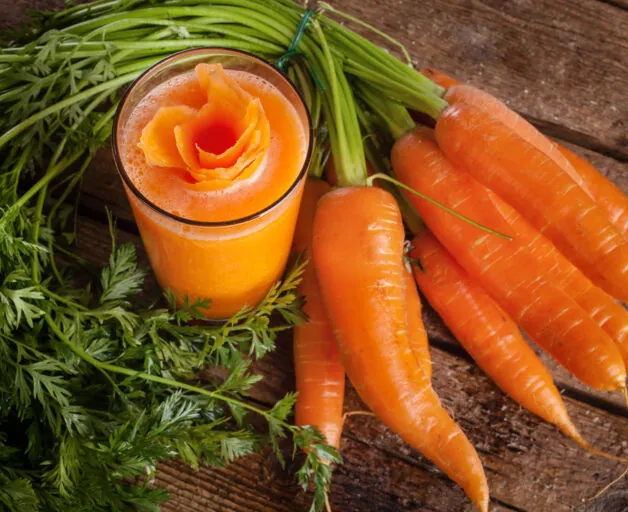
In the 17th century, orange carrots as we know them, first appeared in the Netherlands. Dutch farmers invented the orange carrot in honor of the “House of Orange”, the Dutch Royal Family. The orange color results from beta-carotene, which is a red-orange pigment found in some plants and fruits.
Carrots contain quite the nutritious punch. The most widely known health benefit of carrots is that they contribute to good vision. This is because our bodies turn beta-carotene into vitamin A, which is important for the health of vision (including night vision), and carrots are one of the best sources for beta-carotene. The vitamin A is also important to the health of our bones, skin, and teeth.
Carrots are known to have many medicinal properties. Eating carrots can aid the body in repairing damaged cells. They also can be used as an antiseptic for skin wounds, and very effectively clean your mouth from bacteria.
Other little-known facts about carrots include:
- Just a handful of baby carrots or one medium carrot counts as one serving of your daily veggies.
- Carrots are a good source of fiber, which means they are good for the digestive system.
- Vitamin C, potassium, folate, and vitamin B6 are also found in carrots, as well as several minerals like magnesium and calcium.
- The purple pigments of the purple carrots are called anthocyanins. Anthocyanins act as anti-oxidants that protect the body.
- Including carrots in your diet when breast feeding helps to improve breast milk production.
- A carrot is 87% water, so consuming them can help you to be sure your body is getting an adequate amount of H2O.
- Out of all vegetables, it’s no surprise that carrots have the largest content of vitamin A (beta carotene). 100 grams of carrot will give you 104% of the recommended daily dose.
- 30% of American Vitamin A intake comes from carrots.
- One glass of milk contains the same amount of calcium as in 9 carrots.
- One carrot gives you the energy to walk one mile!
As you can see it is very beneficial to make sure carrots are a part of our diets. However, it is true that eating massive amounts of carrots can sometimes cause a person’s skin to turn yellowish orange. This is a condition called carotenemia and is most noticeable on the soles of your feet or the palms of your hands. It requires an extremely high amount of carrot consumption to get carotenemia, so it is not very common, and it is completely reversible by just reducing carrot intake.
Carrots can be eaten in various different ways. You can eat them raw, they are delicious dipped in hummus or ranch. Carrots are often boiled, baked, fried, grated, juiced, mashed, pulped, pureed, and steamed. Carrots are also often used in stir-fries and salads. They can also be dehydrated to make chips, powder, and flakes. Even the carrots greens are edible, but consumption is rare.
In western countries, the natural sweetness and sugars of carrots allow them to be used in decadent desserts like carrot cake. Portugal is known to use carrots in jam, and in India they are used in many deserts. Around the world carrot juice is widely consumed, especially as a health drink, with or without other fruits and vegetables. You can try them in one of the several recipes that we have collected here on FillYourPlate.org.
In 2004, carrots were ranked as the seventh most valuable crop grown in the United States. California is our top fresh carrot producer, and Washington is the top grower of carrots meant for canning and processing. However, Arizona carrot production is nothing to sneeze at. The Rousseau Family Farms is our largest carrot farmer producing on average 42,000,000 pounds of carrots each year which are then sold to grocers all over the United States (including Arizona). The average American eats around 10.6 lbs. of fresh carrots a year, so the carrots grown at Rousseau Family Farms alone can feed around 3,962,264 people in a year!
There really are quite a bit of carrot facts. Here are some more!
- Mel Blanc (the voice of Bugs Bunny) was allergic to carrots!
- Baby carrots aren’t actually babies. A baby carrot comes from a large carrot that was rolled over blades and thrown around in a metal cage to be rubbed down into a round-ended, short baby carrot.
- Out of all of the vegetables, only the beet contains more natural sugars than carrots.
- One teaspoon can hold 2000 carrot seeds.
- In 17th century England, carrot leaves were often carried in the hair as a fashion statement.
- Carrots were first introduced to America in 1607 with the first settlers who landed in Jamestown, however they did not become a very popular food until soldiers returned from WWI after having constant contact with them.
- Wild rabbits don’t eat wild carrots.
- The heaviest carrot recorded weighed 18.985 lbs.
- The longest carrot recorded was nearly 17 feet long.
Rousseau Family Farms, though our largest carrot producer, is not the only place you can go to enjoy locally grown carrots. When you visit Fill Your Plate, you can click on “Find a Farm Product” and type in carrots, and a list of local growers will pop up. You can then choose a grower closest to you. You can also buy fresh Arizona-grown carrots from Rousseau Family Farms, most likely, at your local grocery store.
Related articles
- Fun Facts About Zucchini (fillyourplate.org)
- A Simple Guide to Start Eating Healthier (fillyourplate.org)
- Fun Facts about Clementines (fillyourplate.org)

